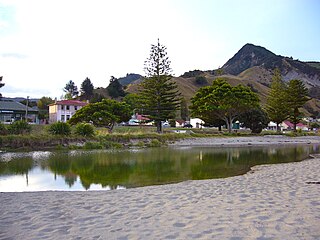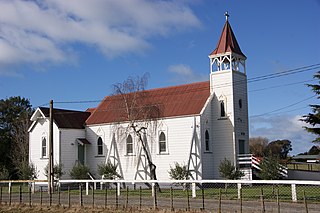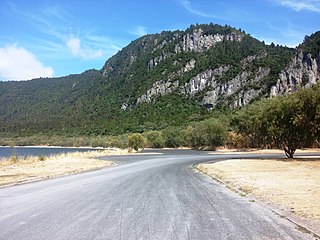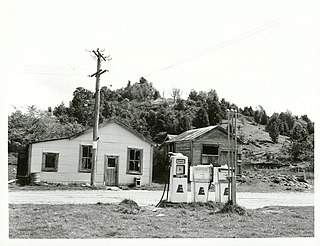Demographics
Reporoa is in two SA1 statistical areas which cover 15.67 km2 (6.05 sq mi). [1] The SA1 areas are part of the Golden Springs statistical area.
Historical population of Reporoa| Year | Pop. | ±% p.a. |
|---|
| 2006 | 330 | — |
|---|
| 2013 | 279 | −2.37% |
|---|
| 2018 | 279 | +0.00% |
|---|
| Source: [2] |
Reporoa had a population of 279 at the 2018 New Zealand census, unchanged since the 2013 census, and a decrease of 51 people (−15.5%) since the 2006 census. There were 99 households, comprising 141 males and 138 females, giving a sex ratio of 1.02 males per female, with 69 people (24.7%) aged under 15 years, 60 (21.5%) aged 15 to 29, 126 (45.2%) aged 30 to 64, and 24 (8.6%) aged 65 or older.
Ethnicities were 63.4% European/Pākehā, 51.6% Māori, 5.4% Pacific peoples, and 4.3% Asian. People may identify with more than one ethnicity.
Although some people chose not to answer the census's question about religious affiliation, 57.0% had no religion, 30.1% were Christian, 4.3% had Māori religious beliefs, 2.2% were Hindu and 2.2% had other religions.
Of those at least 15 years old, 9 (4.3%) people had a bachelor's or higher degree, and 57 (27.1%) people had no formal qualifications. 21 people (10.0%) earned over $70,000 compared to 17.2% nationally. The employment status of those at least 15 was that 108 (51.4%) people were employed full-time, 33 (15.7%) were part-time, and 24 (11.4%) were unemployed. [2]
Golden Springs statistical area
Golden Springs statistical area covers 498.92 km2 (192.63 sq mi) [1] and had an estimated population of 1,960 as of June 2023, [8] with a population density of 3.9 people per km2.
Historical population for Golden Springs| Year | Pop. | ±% p.a. |
|---|
| 2006 | 1,764 | — |
|---|
| 2013 | 1,797 | +0.27% |
|---|
| 2018 | 1,767 | −0.34% |
|---|
| Source: [9] |
Golden Springs had a population of 1,767 at the 2018 New Zealand census, a decrease of 30 people (−1.7%) since the 2013 census, and an increase of 3 people (0.2%) since the 2006 census. There were 609 households, comprising 939 males and 831 females, giving a sex ratio of 1.13 males per female. The median age was 31.6 years (compared with 37.4 years nationally), with 468 people (26.5%) aged under 15 years, 366 (20.7%) aged 15 to 29, 810 (45.8%) aged 30 to 64, and 123 (7.0%) aged 65 or older.
Ethnicities were 80.0% European/Pākehā, 29.9% Māori, 2.9% Pacific peoples, 4.9% Asian, and 1.5% other ethnicities. People may identify with more than one ethnicity.
The percentage of people born overseas was 12.4, compared with 27.1% nationally.
Although some people chose not to answer the census's question about religious affiliation, 59.8% had no religion, 26.1% were Christian, 2.5% had Māori religious beliefs, 0.7% were Hindu, 0.2% were Muslim, 0.5% were Buddhist and 2.4% had other religions.
Of those at least 15 years old, 165 (12.7%) people had a bachelor's or higher degree, and 258 (19.9%) people had no formal qualifications. The median income was $39,800, compared with $31,800 nationally. 225 people (17.3%) earned over $70,000 compared to 17.2% nationally. The employment status of those at least 15 was that 771 (59.4%) people were employed full-time, 216 (16.6%) were part-time, and 39 (3.0%) were unemployed. [9]
This page is based on this
Wikipedia article Text is available under the
CC BY-SA 4.0 license; additional terms may apply.
Images, videos and audio are available under their respective licenses.
















